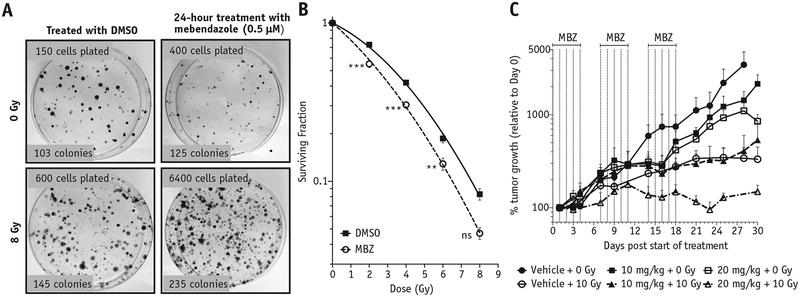Fig. 3.
MBZ radiosensitizes triple-negative breast cancer in vitro and in vivo. (A) SUM159PT cells were treated with MBZ (0.5 μM) for 24 hours. On the next day, the drug was removed, and cells were detached, irradiated at different doses, and plated in a clonogenic survival assay. Colonies of more than 50 cells were stained with crystal violet and counted 3 weeks later (B). Data points in (B) are means of 4 biological repeats ± 1 SEM. There was a statistically significant change in the alpha and beta parameters obtained from a linear-quadratic fit between the control and treated groups. A 2-way analysis of variance statistical test for each irradiation dose was also performed: **P < .001, ***P < .0001. (C) SUM159PT tumors were implanted subcutaneously on the thighs of NSG mice. When the tumors reached an average diameter of 5 mm, they were irradiated with a single dose of 10 Gy followed by administration of MBZ intraperitoneally for 5 days, with 2 days off, for 3 weeks (n = 4–6). Results are the average of biological replicates, and error bars represent 1 SEM. Dotted lines indicate the MBZ treatment schedule. The tumor volumes were determined every other day and plotted as a percentage of tumor growth (note logarithmic scale for y-axis). Abbreviations: DMSO = dimethyl sulfoxide; MBZ = mebendazole; SEM = standard error of the mean.

